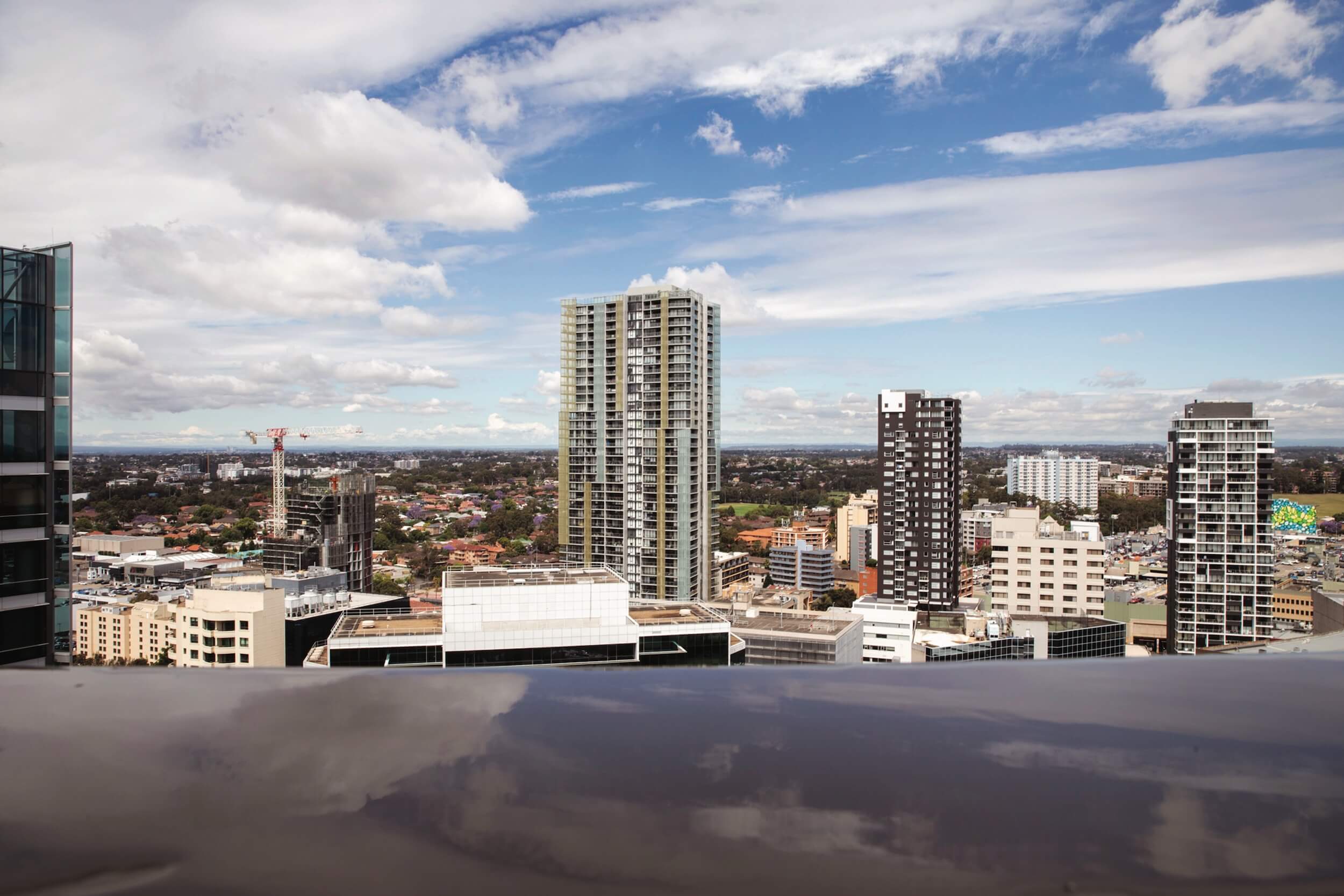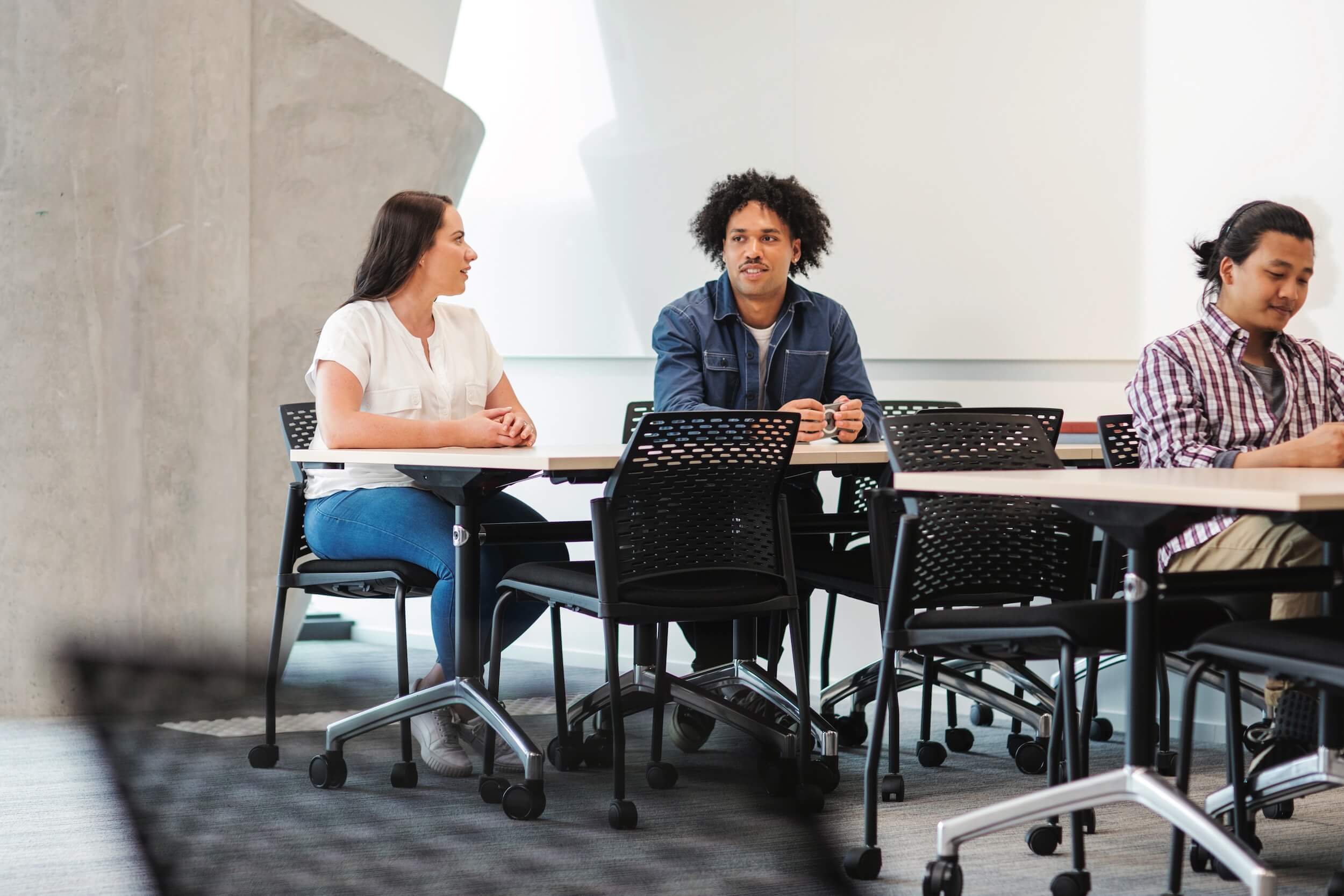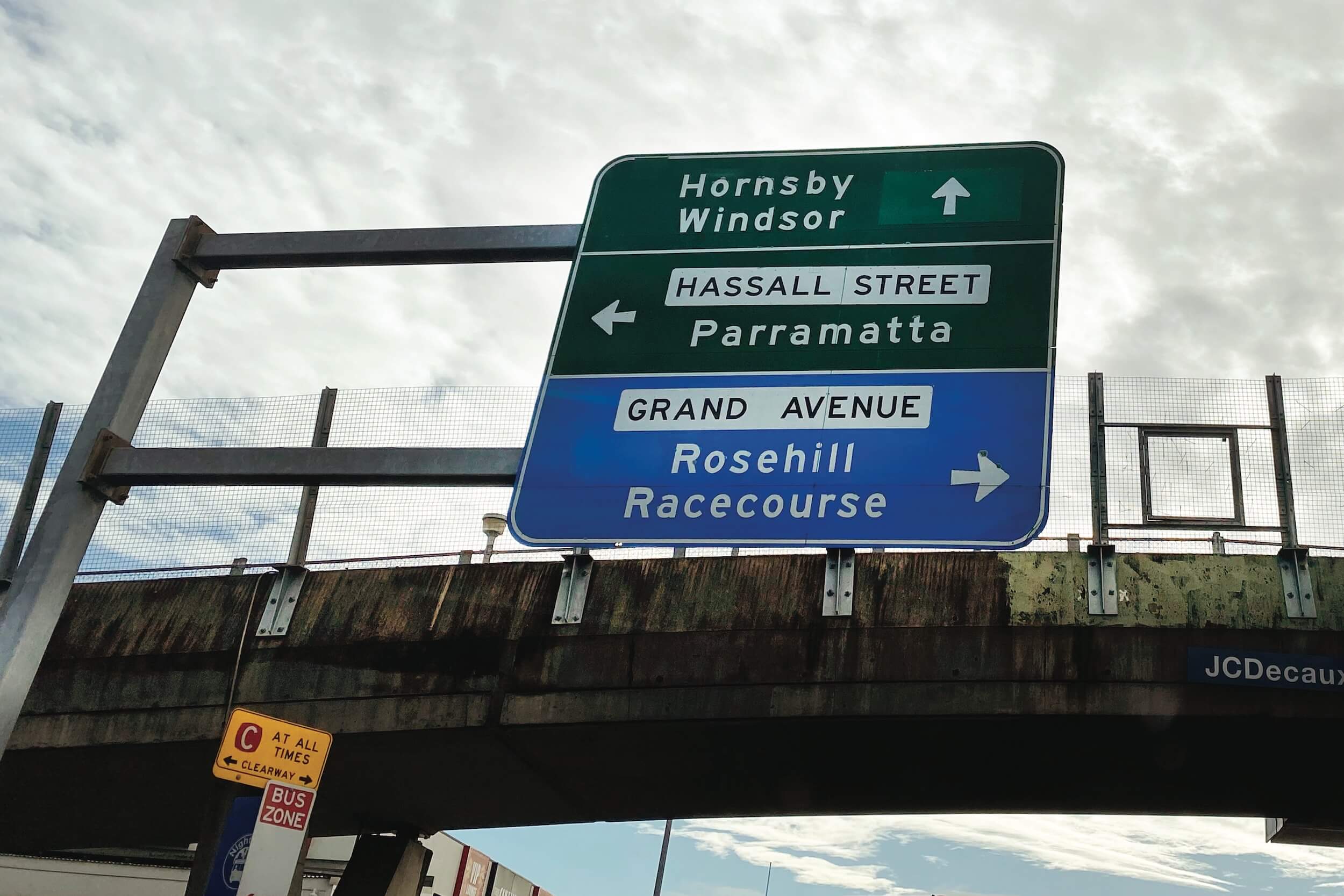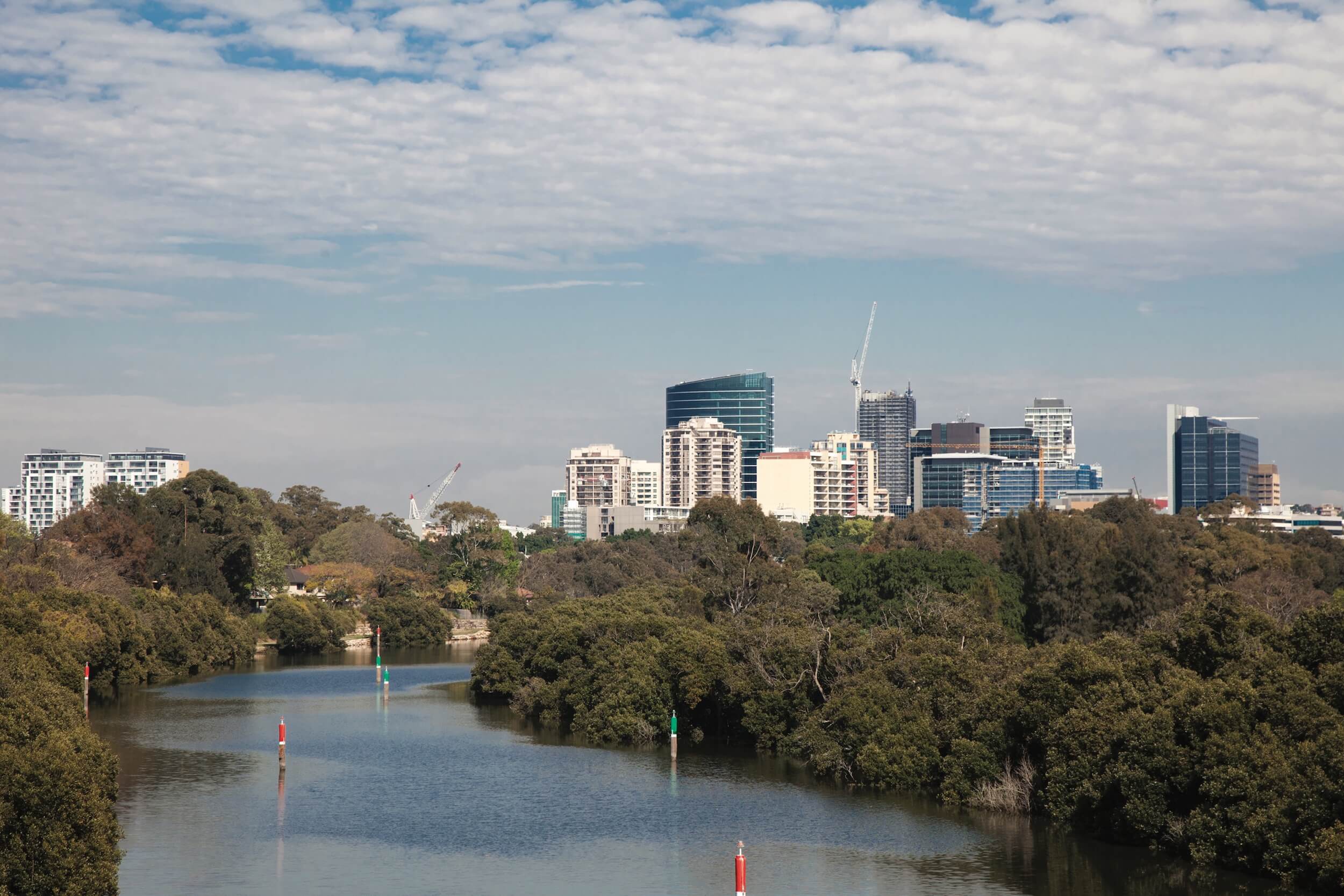This Review makes twelve (12) recommendations to the NSW Premier regarding the development of the Greater Parramatta region.
When looking ahead to 2035, it is not a question of whether Parramatta will become a global city, but what kind of global city it chooses to be and what steps are required to get there.
The Review’s 12 recommendations are framed within three interrelated themes:
- Strategic Planning and Governance;
- Planning and Infrastructure Priorities; and,
- Liveability and Sustainability.
These themes are set against a series of truisms proven via Parramatta’s trajectory to this point, and in the context of Greater Sydney’s concurrent planning, development, and growth experience.
FUNDAMENTALS
In augment to the Review’s recommendations, some fundamentals are self-evident, yet nonetheless extraordinarily useful as broad benchmarks against which to both guide and gauge the delivery and effectiveness of this Review’s recommendations.
First, heritage is hard but done well it pays dividends. Sydney’s
The Rocks quarter is testament to the city-shaping benefits that
can be achieved through balancing cultural, community, and commercial considerations.
Second, it is critical that the unequal impacts of urban change are only cyclical and do not become structural. Nowhere is this risk more evident than in housing. Parramatta’s investment momentum should address rather than exacerbate housing unaffordability.
Third, Parramatta’s development as a city-region must prioritise – and offer those who live, work and visit it – world-class, second-to-none quality of life.
Fourth, Parramatta must be shaped as a city-region that foregrounds and celebrates its identity and contemporary role as a place to meet and gather.
Fifth, Parramatta must be recognised as a city-region that is Sydney’s ‘twin’ city, not its ‘second city’.
A. Strategic planning and governance
Government should prioritise the development of the Strategic Plan for Greater Parramatta. The Ministerial Direction to begin work on the Strategic Plan was issued on March 2022 – action needs to be accelerated and this needs to be made a priority of the NSW Department of Planning and Environment (DPE).
Actions to support Recommendation 1:
- 1.1 Accelerate action on the Greater Parramatta Strategic Plan as a priority for DPE.
- 1.2 Integrate the ‘borough’ framework into the Strategic Plan to frame funding partnerships and collaborations with Local Governments (core to the successful realisation of the Plan).
- 1.3 Integrate ‘city deal’ framework as part of the Strategic Plan to frame funding partnership and collaboration with Federal Government.
The Strategic Plan for Greater Parramatta needs to engage more with Local Government. A window of opportunity to close this gap exists with NSW Local Governments’ currently updating their Community Strategic Plans. The Strategic Plan for Greater Parramatta should be integrated into relevant Local Government’s Community Strategic Plans. To achieve this and to foster ongoing dialogue a forum needs to be established and resourced.
Actions to support Recommendation 2:
- 2.1 Establish and appropriately resource a forum for engagement with the region’s four LGA Councils.
- 2.2 Appoint ‘borough presidents’ for the 26 precincts identified in the Place-based Infrastructure Compact (PIC) Pilot in the Greater Parramatta region to encourage dialogue and to increase community participation in strategic planning of the region.
- 2.3 Support LGAs to integrate the Greater Parramatta region Strategic Plan into their Community Strategic Plans.
The development of a Federal, State and Local government ‘City Deal’ for the Greater Parramatta region, framed around Parramatta as the main terminus for a proposed Fast-Rail network needs to be established as a matter of priority.
Actions to support Recommendation 3:
- 3.1 Set parameters and a timeframe for the development of a City Deal for the Greater Parramatta region.
- 3.2 Develop a fast-rail plan with Parramatta as the main/central terminus.
- 3.3 The Commonwealth Government must structurally incentivise targeted university collaborations to make Parramatta Australia’s first ‘University City’ where universities can partner in large scale city shaping social and economic initiatives.
B. Planning and infrastructure priorities
Westmead is a critical economic anchor, Parramatta’s economy is driven by the Westmead Health Precinct in the west. Internationally recognised research and health expertise is coalescing at Westmead. Investment momentum needs to be sustained by approving and accelerating the Westmead Place Strategy.
Actions to support Recommendation 4:
- 4.1 The NSW Government should draw a line on contested and unresolved deliberations on Camellia. A clear and immediately actionable plan is needed. This plan should place liveability and preserving the economic corridor of the region at its core and be consistent with the wider interests of Greater Parramatta.
- 4.2 The Greater Parramatta region should be identified as the site from which to support the establishment and development of advanced manufacturing and residential housing industries. The region has the capacity to become a global leader in housing technologies that offer affordable and flexible housing solutions to:
- sustainability challenges e.g. develop affordable, transportable, short-term emergency housing ‘pods’ that can be easily constructed and delivered into a region after a natural disaster like bushfire or flood; and
- adapting to change over the life course of a building/house and the people who live in and make these buildings homes.
- 4.3 The University of Sydney’s viral vector announcement for Ultimo, and biomedical push at Camperdown, should be balanced by reciprocal commitments to the Westmead Precinct.
The precinct must be preserved for industrial land rather than redeveloped for residential development. The PIC Pilot unequivocally identifies that the Draft Place Strategy for residential redevelopment of Camellia-Rosehill is high-cost yet provides little benefit. The precinct is constrained by poor road access, contamination, a wastewater pumping station requiring relocation and no existing school sites. The costs and constraints of this site is too high to be cost-effectively funded or recovered from developer contributions. It is a concern that the NSW Government continues to frame this precinct development as a question of either higher order urban services, or a mixed-use precinct. The PIC Pilot made a compelling case as to why it should be only developed around higher order urban services.
Actions to support Recommendation 5:
- 5.1 Review the Draft Place Strategy for Camellia-Rosehill, with priority placed on preserving industrial land in the Camellia-Rosehill Precinct.
- 5.2 The NSW Government needs to incentivise and fund deep and integrated co-location between universities and industry to globally elevate and diversify Parramatta’s innovation ecosystem.
- 5.3 Progressive and sustainable planning frameworks are needed to drive the urban transformation of the region, e.g. Westmead’s Hawkesbury Road – Park Avenue corridor.
- 5.4 The NSW Government must re-commit to the regeneration of the Cumberland East site, and progress the development of a ‘health science park’ at the Toongabbie Creek-Briens Road enterprise zone.
In order to unlock Greater Parramatta’s potential to be home to world-class sports and entertainment facilities, existing sites that are underperforming need to be activated and greater competition encouraged. Rosehill Racecourse languishes as a feeble attempt to make the city liveable, is stranded on James Ruse Drive, with no relationship to the city, and represents a lack of planning and vision. The Australian Turf Club (ATC) must significantly increase its corporate responsibility over this site and engage purposefully with the city.
Actions to support Recommendation 6:
- 6.1 Revitalise Rosehill Racecourse, encourage ATC to assume corporate responsibility over this site.
- 6.2 Prioritise and accelerate the development of the ‘Civic Link’ from Parramatta Square to the Powerhouse Museum and acquire, restore and ‘arts’ activate the Roxy Theatre.
- 6.3 Redress decadal inaction and urban decay at Sydney Olympic Park – look to East London (Stratford) as an example of a dynamic economic, cultural and connected Olympics-legacy site.
Fast-rail infrastructure will be critical to accelerating the prosperity, liveability, and connection between the six cities. Parramatta is a high net-benefit site to locate a fast-rail terminus relative to other regions in Sydney. High-speed rail infrastructures are costly and high-stakes urban projects. Getting the terminus location right is key to ensuring that fast-rail can operate at top speeds, maximise localised wider economic benefits, and make sure that time-saving benefits accrue. Parramatta, as a terminus site, has the potential to reproduce or even exceed the profound impacts of fast-rail infrastructure developments seen in the United Kingdom. Parramatta could become the ‘St Pancras of the Southern Hemisphere’.
Actions to support Recommendation 7:
- 7.1 Plan and develop a fast-rail strategy for Greater Parramatta.
- 7.2 Identify and develop Parramatta as a Terminus/Port for Fast-Rail that connects Newcastle and Wollongong.
- 7.3 Identify how Aerotropolis will connect with Parramatta.
There are significant gaps in cultural infrastructure that need to be addressed for current and future populations in Parramatta. This lack of sufficient and appropriate cultural infrastructures is resulting in a significant loss of economic opportunity to the region. There is approximately $86 million in income foregone each year, this foregone income will increase each year as the population grows. There are not enough cultural infrastructures (i.e. theatres/cultural spaces) and the infrastructures that exist do not cater to the current and future demands. For example, Parramatta is attracting a younger more affluent population who are more likely to speak a language other than English at home. There is a need for cultural offerings and digitally blended spaces such as spaces where digital content can be produced.
Actions to support Recommendation 8:
- 8.1 Fund the planning and development of cultural infrastructures including a visual arts gallery, cultural production hubs, rehearsal spaces, performance spaces, digitally blended spaces and incubator spaces.
- 8.2 Fund community-based initiatives and programs to increase engagement with Cultural Infrastructures and support start-ups and entrepreneurs through access to appropriate spaces.
- 8.3 Federal government to provide increased allocations to universities to provide regionally-based and accessible training in the creative industries for Western Sydney.
- 8.4 Accelerate the development of, at scale, performance and conference facilities, particularly in underutilised spaces like Rosehill and comparable areas close to the Parramatta CBD and Westmead Precinct.
C. Liveability and sustainability
Improving and maintaining the liveability of Parramatta cannot be achieved with the significant deficits of critical liveability infrastructure. Housing must be viewed as an essential infrastructure that requires transformational, city-shaping approaches. The State Government’s transformational investment in Greater Parramatta’s transport infrastructure provides the foundation from which it must adopt a transformational, city-shaping approach to the challenge of housing in the region. As shown in Singapore’s unrivalled liveability-oriented planning outcomes, housing is a critical infrastructure to increase liveability. Affordable housing must be built that supports young professionals to live and work close to the CBD and creative industry districts.
Actions to support Recommendation 9:
- 9.1 Identify housing affordability as posing the biggest threat to Parramatta’s ‘global’ 2035 trajectory.
- 9.2 Adopt a 5-10% affordable housing target for major renewal areas, to support and retain in the region vulnerable households, essential workers, young professionals and creative industry workers.
- 9.3 Pursue a new Commonwealth State Housing Agreement that will:
- Define housing as an essential ‘infrastructure’;
- Provide long-term (decadal) funding and market certainty and stability; and,
- Create opportunities to innovate, test and bring to the private market commercially viable technologies in housing design, construction, and building materials.
One of Greater Parramatta’s critical strengths is that it is a global education destination. The region is home to several world-class universities and knowledge centres, innovation hubs, and a thriving international student community. The presence of the University of Sydney will further cement the region’s reputation as a global education city-region. The University of Sydney must be supported in accelerating their plans to expand at Westmead. Further, the federal government must allocate additional targeted university places that will support the consolidation and continued growth of Parramatta as a University City.
Actions to support Recommendation 10:
- 10.1 Encourage and help accelerate the University of Sydney’s plan to locate in Parramatta.
- 10.2 Federal Government to allocate additional regionally targeted university places.
- 10.3 Implement the Westmead Place Strategy to drive industry investment and attract international talent.
Significant improvements to the active transport network across Greater Parramatta are needed to increase walkability and connect its world-class entertainment and sporting precincts. A coordinated approach to active transport is vital to improving the liveability and connectivity of the region. Government investment through WestInvest should be leveraged to develop and accelerate previously identified active transport initiatives. In particular, a cycle network for Greater Parramatta must be fast-tracked.
Actions to support Recommendation 11:
- 11.1 Using the ‘borough’ approach (see page 15 of full report), State and Federal Government should partner with all local councils within the Greater Parramatta area to determine how best to deliver improved active transport facilities to local communities within the region.
- 11.2 Leverage WestInvest as an opportunity to develop initiatives identified in City of Parramatta’s, ‘Our Living River’, 10-step Parramatta River Masterplan.
- 11.3 Fast-track a cycle network for Greater Parramatta.
Greater Parramatta’s natural environment is one of its most unique and important assets. There is an opportunity for its conservation to be guided by Indigenous knowledge, which has protected and cared for the region for over 60,000 years. Indigenous knowledge will be critical to ensuring that this ‘City of Green and Blue’ is preserved for future generations. There is an important opportunity – and urgency – to realising the conservation of the region. Priorities must include making sure the Parramatta River is swimmable by 2025, increasing tree cover, and building new and upgraded Green Grid links.
Actions to support Recommendation 12:
- 12.1 Support the City of Parramatta’s ‘10-Step Parramatta River Masterplan’ in order to make Parramatta River swimmable by 2025.
- 12.2 Support new and upgraded Green Grid links and urban tree cover in all Greater Parramatta LGAs, following the successful model employed at Sydney Olympic Park.
- 12.3 Identify heat vulnerability of at-risk populations including children. Fund installing tree canopies at school sites across Greater Parramatta.
- 12.4 Parramatta Park must be a grander centrepiece for the city, and warrants a ‘botanical gardens’ uplift to improve liveability and accessibility, and to elevate the park to landmark status.
Download Full Report
To view the full report, download 'Parramatta 2035: Vibrant, Sustainable, Global.'






